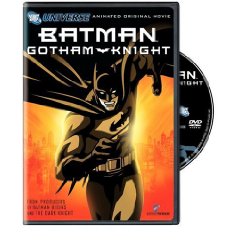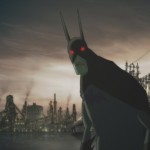In an ideal world, you pay more for increased convenience. Want to save money? mow your own lawn. Have no time? Pay the local kid $20. etc.
This dynamic seems to be inverted online, however, especially with regard to digital content. Here, you pay for decreased convenience – a good example being DRM restrictions on video games, where legitimate, paid users of a game like Spore must suffer through all manner of annoying restrictions and installation limitations and game activations and whatnot. Meanwhile, anyone who downloads the cracked version off the torrents for free, gets a clean, enjoyable gaming experience unmarred by all the nonsense. Therefore we have the curious situation where anti-piracy policies serve to incentivise piracy rather than prevent it[1. Shamus Young’s ongoing DRM rants are the definitive explanation of this dynamic. I think he needs to write a book.].
A similar dynamic applies to anime, except that instead of invasive DRM you have simple expense. This is partly due to region-coding, which maintains artificial price differences between markets. It’s also due to the increasing cost of producing anime, which gets passed on to the end user. Price is not a barrier for people with steady jobs who enjoy anime as a hobby, but this probably doesn’t describe the target demographic very well. Another problem with paid, legitimate anime is that it comes mostly in DVD form, which is physical media. As such, it must be carried around, doesn’t fit in your pocket, can only be played on specific hardware and displays (ie, a TV with a DVD player attached), might scratch, etc. Even if you circumvent the expense issue by paying for a service like Netflix (which is not free, but significantly cheaper than buying anime outright), you still hae these physical media headaches to deal with. Even a completely free solution like Hulu.com ties you down, as its DRM keeps you locked into your web browser. Meanwhile, users who simply download fansubs get all the benefits – free, totally portable digital content – and even some extras (eg. superior subtitle quality). Again, the incentive on the end user is to encourage downloading rather than paying.
So the question is, who perpetuates this imbalance? Is there a way to get users to pay for convenience again? The power seems to be solely in the hands of the publishers here. There’s already a set of concrete suggestions for the gaming industry, which are eminently reasonable but probably will never be embraced. A similar set of suggestions could be crafted for the anime industry as well, but I’ll leave that to otaku who have more knowledge of the industry itself than I do.
Speaking as a consumer though, I can define convenience that I’d pay for. I currently pay Netflix $20/month, so that’s a good guideline for a budget. If I could purchase entire seasons of a given anime for $10, or individual episodes for $1, and have these come in DRM-free files that I can freely reburn to DVD for home viewing or convert to any intermediate format for whatever digital player I might choose, then I’d never need to download again. I would also pay an extra $.50/ep or $5 per season for quality fansubbing. Note that if the anime studios went DRM-free, and completely outsourced subbing to the fansub community, then the latter coudl legitimately charge for the service (which would be a true value-add).
Of course, the scheme above means someone could just seed the files they buy out to torrent. But so what? That’s what happens now, anyway. at least with my scheme, people like me pay more in. Revenue will increase, and that’s the bottom line.




